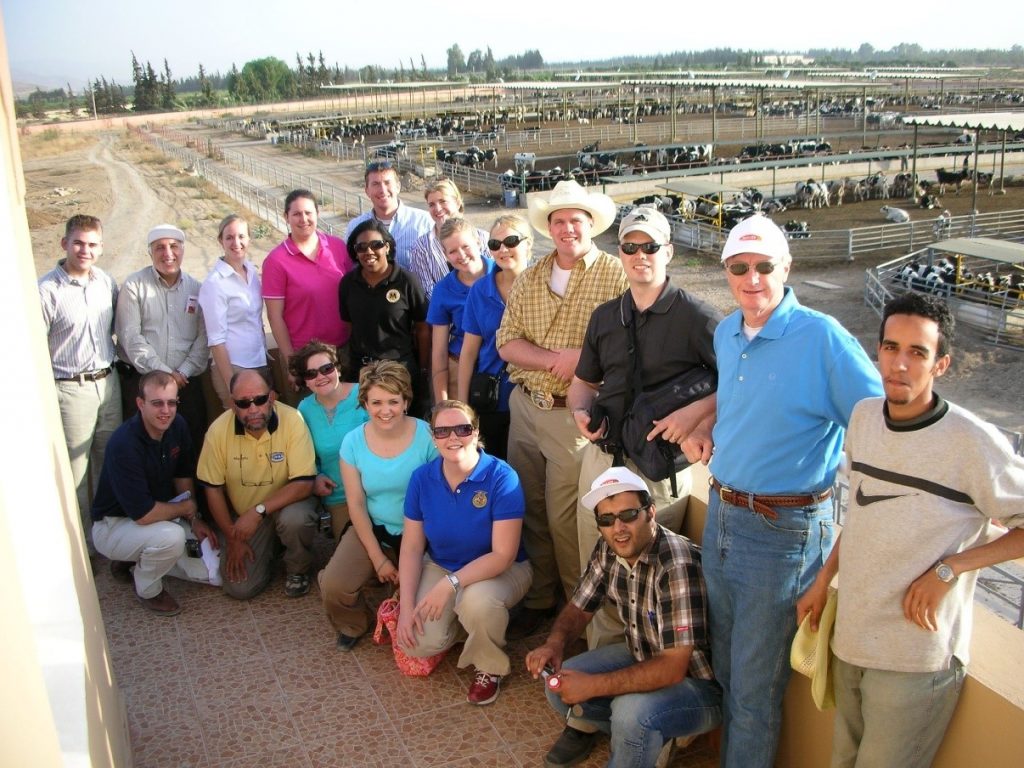A load of U.S.-bred Holstein heifers – 1,750 head valued at $4 million – will leave U.S. shores for Morocco in December 2020, the latest downstream benefit of a long-lasting partnership between the U.S. Grains Council (USGC) and COPAG, a Moroccan dairy cooperative.
“This is the third time COPAG has imported animals from the United States since the feedlot was inaugurated,” said Dr. Mustapha El Youssoufi, USGC beef consultant in Morocco. “Including the upcoming shipment, COPAG has imported 5,400 U.S. dairy cattle with a total value of $14.7 million.”
The Council has worked with COPAG leadership for more than 15 years. The organization is a 14,000 farmer-member cooperative with more than 85,000 Holstein cattle. Business operations have expanded beyond the original citrus and dairy operations to include dairy processing, beef production, beef processing and vegetable production.
The Council first signed a memorandum of understanding with the cooperative in 2003 to provide engineering and start-up support for an 11,000-head beef feedlot, the first of its kind in Africa. When the feedlot was officially inaugurated in 2005, a team from the USGC Board of Directors and sorghum sector attended.
Over the years, the Council also provided consultations for COPAG’s dairy operations and helped with the startup of the first private slaughterhouse in Morocco. COPAG also operated the only feed mill focused on producing feed concentrates for ruminants, using U.S. feed grains to ensure overall herd performance and maximum productivity.
In return for this support, COPAG granted the Council access to its facilities as a training center in Morocco for educating trade teams on the benefits of intensive production practices; highlighting the importance of feed concentrates for ruminants; and demonstrating the use of U.S. distiller’s dried grains with solubles (DDGS), steam-flaked corn and sorghum to regional feed millers. Teams from the United States, Spain, Morocco, Algeria, Tunisia, Egypt, Ethiopia and India have all participated in these training programs.
“When the Council started working with COPAG, our original goal was to highlight the benefits of corn, sorghum and DDGS in cattle feeds,” Youssoufi said. “The relationship between the Council and COPAG is so unique and complementary we have seen countless international teams visit COPAG to learn about dairy and beef production.”
Beyond the training programs and technical exchange, COPAG is also a steady importer of U.S. coarse grains and co-products. In addition to U.S. dairy genetics valued at $960,000, COPAG has imported 830,000 metric tons of U.S. corn, soybeans, DDGS, corn gluten feed and soy hulls – valued at $190 million – over the past 10 years.
“The return on the Council’s initial investment 15 years ago continues to yield results for U.S. exporters,” said Ramy Taieb, USGC regional director for the Middle East and Africa. “This program highlights the importance of relationships forged over time, demonstrating how they create value for U.S. agriculture in many long-lasting and sometimes unexpected ways.”
About The U.S. Grains Council
The U.S. Grains Council develops export markets for U.S. barley, corn, sorghum and related products including distiller’s dried grains with solubles (DDGS) and ethanol. With full-time presence in 28 locations, the Council operates programs in more than 50 countries and the European Union. The Council believes exports are vital to global economic development and to U.S. agriculture’s profitability. Detailed information about the Council and its programs is online at www.grains.org.

